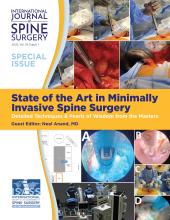ABSTRACT
Background To identify, analyze, and report the patient- and procedure-related factors associated with surgical site infection (SSI) after spinal fusion (SF) surgery.
Methods We included any SSI-SF from January 2013 to September 2015. A total of 989 spine surgeries that required instrumentation were performed.
Results Twenty-four out of 989 (2.43%) patients presented with SSI. More than half of the SSI cases (54%) got infected with either exclusively gram-negative bacteria or a combination of gram-negative and gram-positive bacteria; 9.1% of the surgeries involved the sacral spine (90 out of 989 patients). SSI in long constructs (more than 3 levels) was performed in 66.7% compared with 33.3% with short constructs; 87.5 % of the reported SSI (21 patients) were done through a posterior approach. Of patients who had SSI, 87.5% received prophylactic antibiotics, 92% were operated on during the daytime shift, 50% required blood transfusion, and 79% required surgical debridement. Four patients out of 24 patients died (17%) due to unrelated SSI complications.
Conclusions The overall incidence of gram-negative infections after long SFs remains low in our study population. Despite this low overall incidence, our results demonstrate a relative higher incidence of gram-negative SSIs in surgeries involving more than 3 spinal levels and for all those involving the sacral spine. We propose that there may be a potential benefit of gram-negative prophylactic antibiotic coverage in patients falling in either 1 of these categories. Further multivariate analysis and/or randomized studies may be necessary to confirm our results.
Level of Evidence 3.
Footnotes
Disclosures and COI: The authors of this study have no commercial or financial association with regards to this project and, therefore, have no affiliation that may pose a conflict of interest with the manuscript enclosed. The authors had full access to all the data in the study and take responsibility for the integrity and accuracy of the data, as well as the decision to submit for publication.
- This manuscript is generously published free of charge by ISASS, the International Society for the Advancement of Spine Surgery. Copyright © 2021 ISASS







